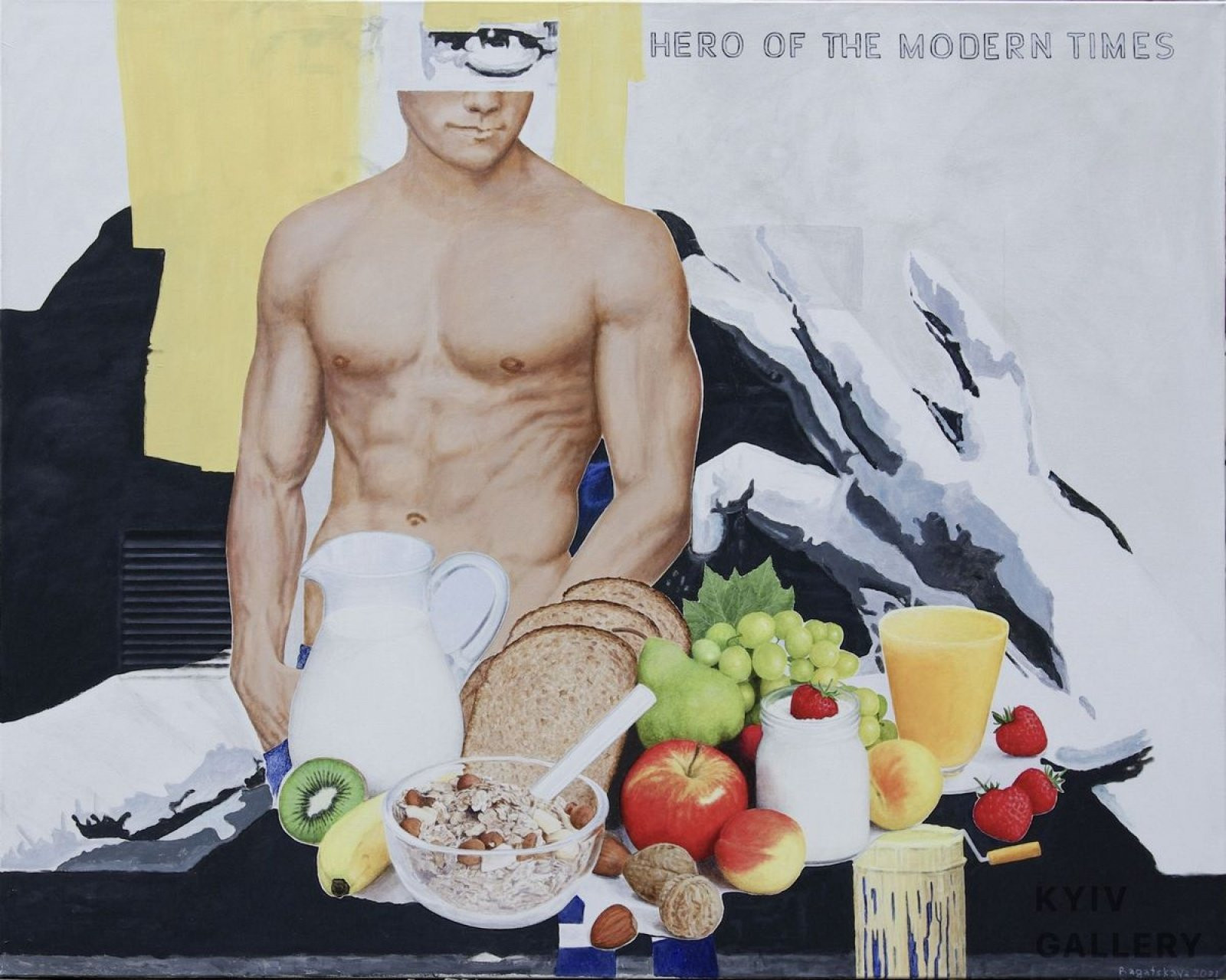

Conceptualism is a direction of contemporary art in which the creative idea is considered more important than the physical form of its expression. The projection of the concept can be an object, sketch, or description. Conceptualism destroys the basic patterns of our thinking, blurring the boundaries between art and everyday life. This direction does not lose its relevance 60 years after its emergence and has every chance to maintain its influence in the XXI century.
The emergence of the direction and further development
The ancestor of conceptualism is considered to be the artist Marcel Duchamp. His way of using things from our everyday life to create art objects laid the conceptual foundation for the future direction. Developing the ideas of Marcel Duchamp, young masters in the middle of the twentieth century began a series of bold experiments (creating installations, performances, and unusual art objects). As a result of one of these experiments in 1917, the "Fountain" appeared, a urinal signed by the master. The art object was offered as an exhibit to the Society of Independent Artists of New York. Henry Flint proposed the name of the new direction in the book An Anthology of Chance Operations in 1961. Among the conceptualists in the early stages, the most notable were the works of Joseph Kosuth. His work "Three Chairs" attracted public attention for its originality and the obviousness of the concept behind it. The viewer was presented with the chair, its' drawing on the wall, and the description from the encyclopedia. The viewer looked at the different forms of expression of the concept "chair," getting used to the idea that the main thing here is the concept.

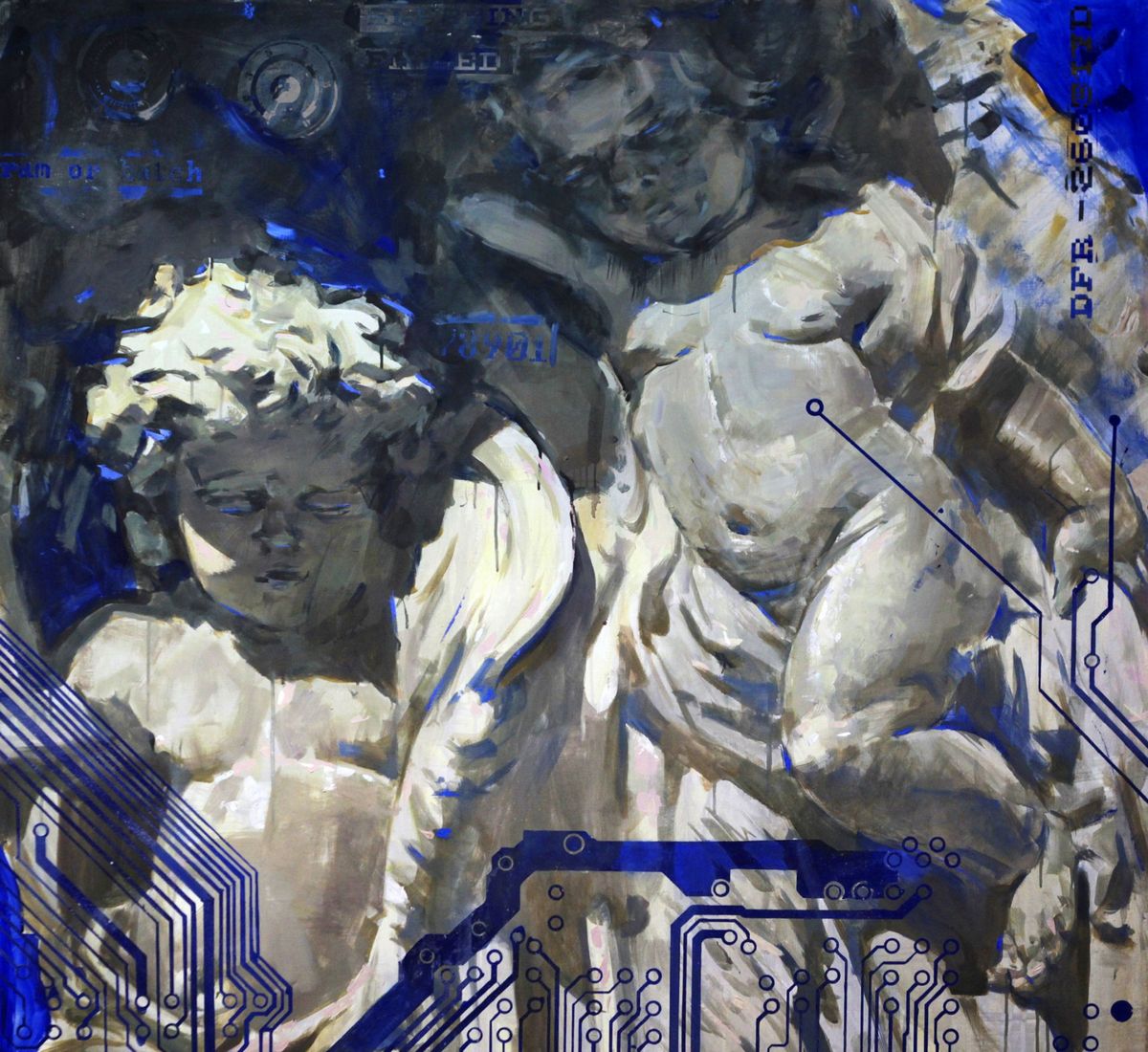
Eduard Potapenkov, painting "Gudon", ID 12970 and Painting "System angels", ID 12969
Together with the English group Art & Language, Koshut insisted on the need to abandon the traditional discourse and the permanent art object. Together with Lawrence Weiner, Edward Ruscha, and Robert Barry, the master actively used texts in his work. In the 60-the 70s of the last century, the tradition was actively developed by a group of composers, designers, poets, and artists Fluxus (Fluxus). Their performances and installations asserted the idea of the secondary nature of the art object about the creative process. In parallel, the works of conceptualists begin to gain scale. Monumental land art realizes the desire of conceptualists to terraform and change the landscape through creative ideas. Implementing such projects was usually associated with the socio-political situation in the world. Some art objects were devoted to the problem of environmental pollution and environmental safety; others - drew attention to the emergence of borders in Europe after the Second World War. Artists were not afraid to work with social and political issues, using creativity to promote their views. Nowadays, conceptual art retains its relevance, as before, remaining a powerful tool for provoking public debate on topical issues.
The art of curiosities and paradoxes
From the very beginning, conceptualism positioned itself as a radically new direction of art designed to revise the basic principles of creative activity. It embodied in the Western European art of the Postmodern era the long-standing desire to abandon materiality and eliminate the emphasis from the forms of expression to the principles and motives. Such ideas have been wandering in the creative environment since the beginning of the twentieth century, but only in the middle of the century could they find a severe philosophical justification and understanding outside professional circles. Art historians find some principles of the new direction in Dadaism and minimalism, but at the time of their development, the basic concepts of postmodernism had yet to be formalized. Therefore, innovative research has yet to give rise to a new tradition.
Changes in the content of the concept of "creativity" also led to a rethinking of the artist's role. If, in traditional art, he is the creator of art objects and images, in the new direction, he instead performs the functions of a guide or a person who shows the path to the viewer to the world of ideas. Shock is a way of clearing the vision of illusions. The use of ordinary objects that have never been perceived before from the point of view of beauty helps to free consciousness from patterns and give the observer a hint that there is something else behind the apparent reality. And it provides ordinary objects with a particular aesthetic meaning. Similarly, the ancient Greek philosopher Plato once proposed to free consciousness from the shadows of materiality for the sake of contemplation of the world of pure beauty.
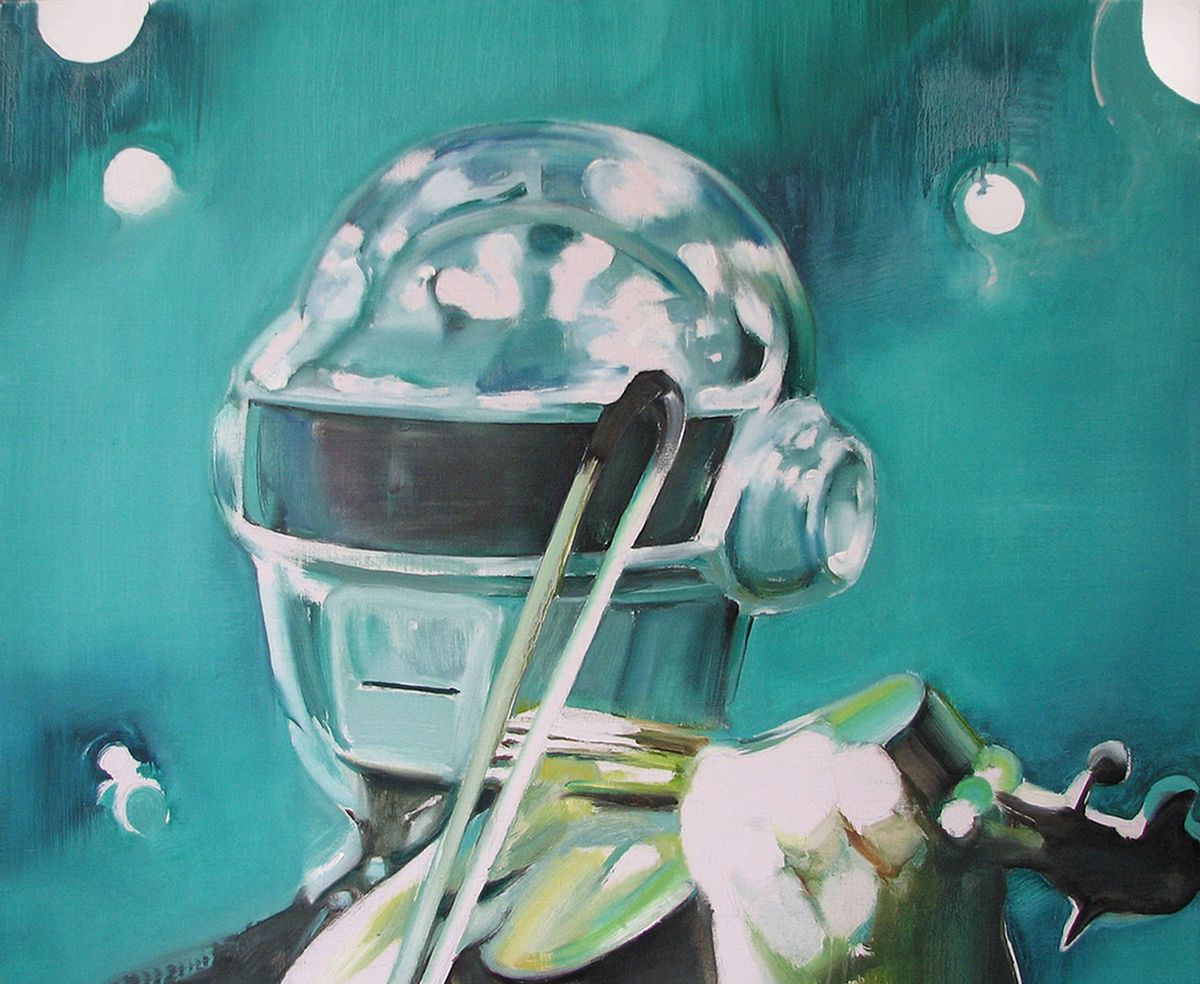
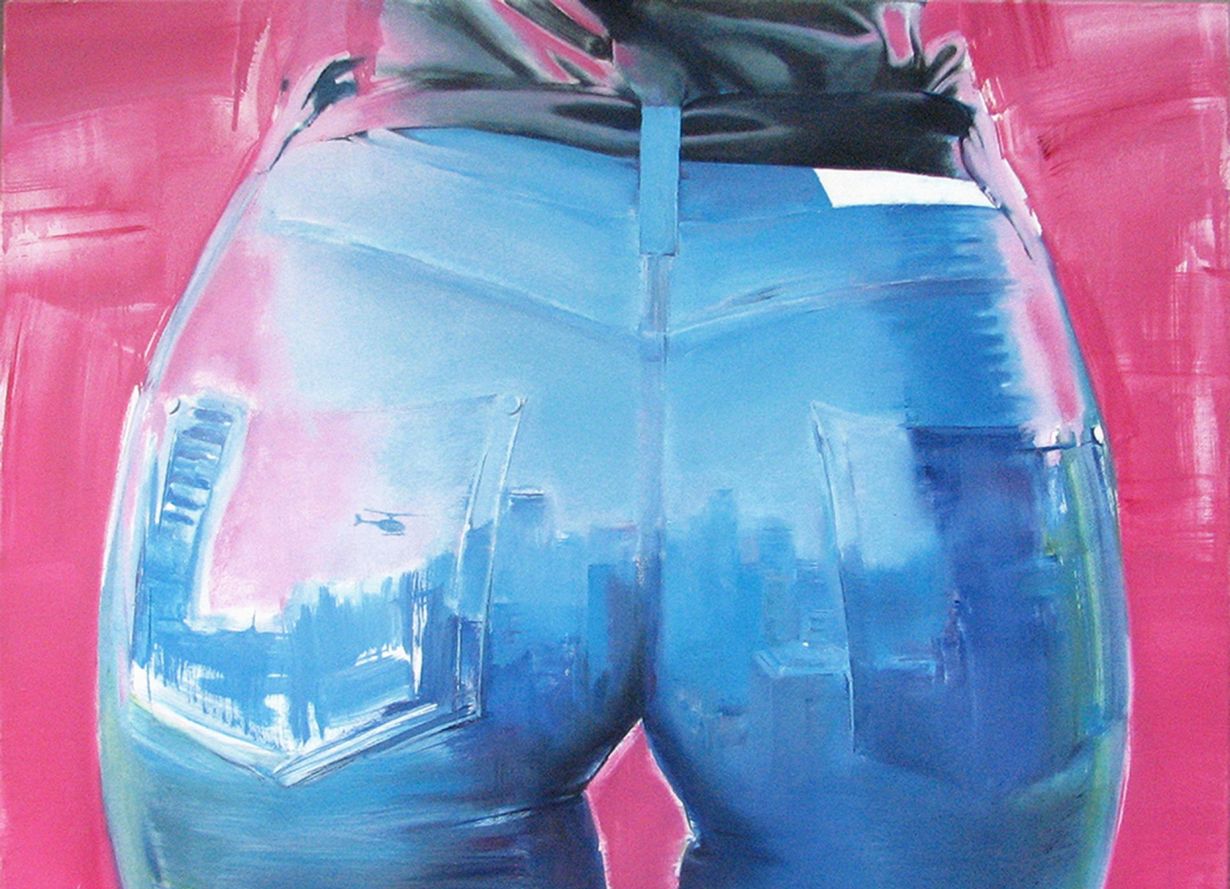
Serhii Kornievskyi, painting "Suite", ID 12945 and Painting "Latex", ID 12941
Conceptualists preached a new art in which a person contemplates concepts without focusing on the forms of their expression. In their opinion, in this way, creativity could be freed from everything vulgar, the ugliest manifestation of which true artists have always considered the trade-in masterpieces. In a certain sense, conceptualism achieved the desired goal. But later, there was an understanding that ordinary objects, becoming the conductors of higher ideas, attracted the attention of merchants, and everything began again. Today you can find many examples of commercially successful conceptual artists whose fees remain unattainable for most representatives of traditional directions.
Famous works
Creators of conceptual art, realizing the idea of absolute freedom from any conventions and traditional forms of expression, use the broadest possible set of tools and means. Their creative experiments sometimes put viewers at a dead end or cause surprise. Perhaps the most notable works are created by representatives of this particular direction. Sometimes masters even compete with each other, pushing the boundaries of the possible as far as possible.
"Kuning's erased drawing"
Early work of Robert Rauschenberg, created by him in 1953. It is a blank framed canvas. The idea of creating the painting arose in the early 50s when Rauschenberg tried to understand whether the work could be destroyed and whether it could then be considered existing. To this end, he went to the famous abstract expressionist Willem de Kooning and asked to give him one of his drawings. After some thought, the artist opened a graph folder and gave the young Rauschenberg the drawing. There are no photocopies of the original, but thanks to digital technology, we now know that the canvas depicted human figures. The consent to the bold experiment brought immortality to the work of Willem de Kooning. It is unknown whether anyone would know about it now if Rauschenberg had not come to the studio.
"Grapefruit"
The book by the shocking artist Yoko Ono goes beyond what is usually considered literature. The entire text consists of phrases and questions the author has been creating for several years. Some of them put the reader at a dead end: "Imagine a thousand suns in the sky at one moment. Let them shine for one hour. Let them gradually mix in the sky". Ono's work can hardly be considered literary or attributed to any genre. Its originality fully realizes the critical ideas of conceptualism, giving the reader almost nothing more than that. The artist's contemporaries often joked with her about this. Still, their attitude did not prevent "Grapefruit" from becoming a literary monument of conceptualism and a bestseller sold even after 50 years.
"Vertical Earth Kilometer"
The work of American artist Walter De Maria was installed on Kassel's Friedrichsplatz in 1977. In technical terms, it was a metal rod inserted into a 1-kilometer-deep well and filled with concrete. According to the author, his earth kilometer was to draw attention to our planet and its place in the Universe. Drilling works caused a great public outcry, thanks to which every 5th German citizen learned about land art. The vast majority of the surveyed citizens spoke out against such works.
"Surrounded islands"
The famous land art of the married couple Christo Yavashev and Jeanne-Claude de Giebon was presented to the public in Biscayne Bay in Miami in 1983. Eleven uninhabited islands were surrounded by floating pink fabric fixed on unique structures. In addition to drawing attention to environmental issues, the project's creators also helped the viewer get aesthetic pleasure from purely geometric shapes. It was possible to see them only from a height, but it was enough to recognize the project as a success. To obtain the permits, Christo and Jeanne-Claude had to lobby the government, commission studies, and even clean the area of garbage.
"Black Ceremony."
Cai Guoqiang's installation was presented to the audience in Qatar in 2011. Known for his passion for fire, smoke, and gunpowder, the Chinese artist delighted fans with spectacular black salutes. Breaking all the canons of such shows, Cai Guoqiang replaced rockets with colored explosive mixtures with military shells. After the explosion, black rings of smoke and micro fragments appeared in the sky.
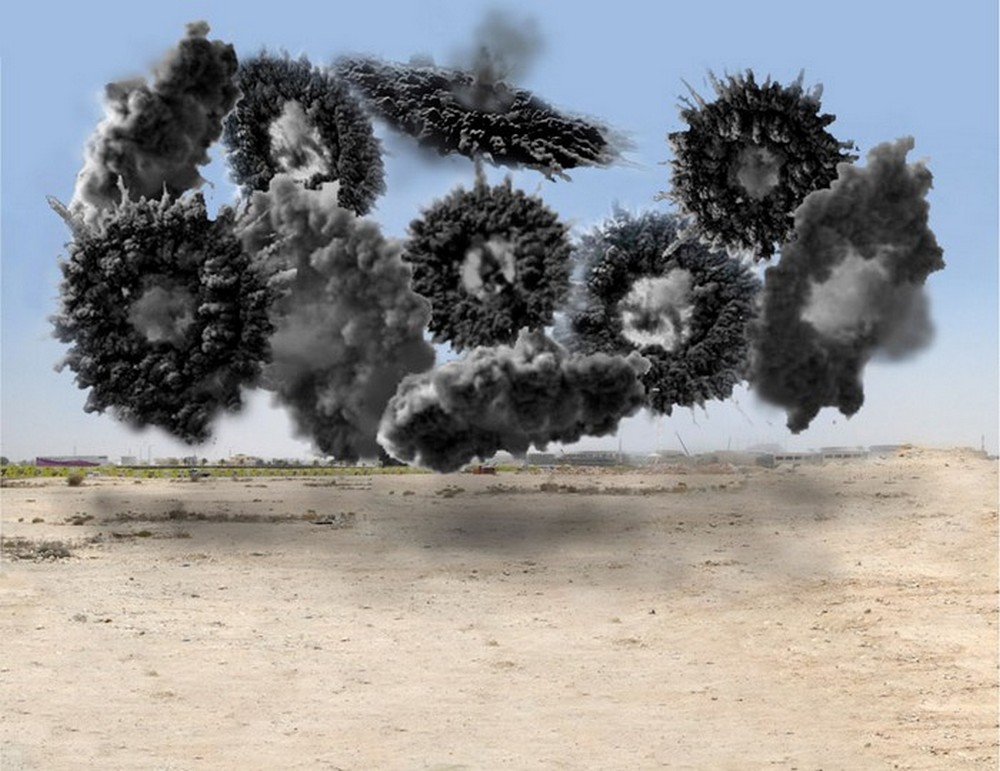
«Black Ceremony» Cai Guoqiang. Photos ©kulturologia.ru
The daytime fireworks were intended to demonstrate the fallacy of the belief that pyrotechnic shows only at night and show the audience how military shells can become a means of demonstrating artistic images.
The place of conceptualism in the history of art and philosophy
The problems of forms of expression and artistic style voiced by the avant-gardists could be solved only by their radical revision. Realizing this strategic task, conceptual artists began to implement it, consistently freeing the viewer from the stereotypes accumulated over the millennia. The reorientation from matter to concepts also opened the prospects of reaching new horizons. Artists increased the number of potential art objects using all existing substances and objects instead of art materials. Thus, the basis for further developing the fine arts tradition was laid. Conceptualists also made a significant contribution to the philosophical tradition. Returning to the ideas of Plato and using the achievements of postmodernism, the new direction closes the circle of European philosophical thought, which lasted more than 2.5 thousand years.
KyivGallery art critic
